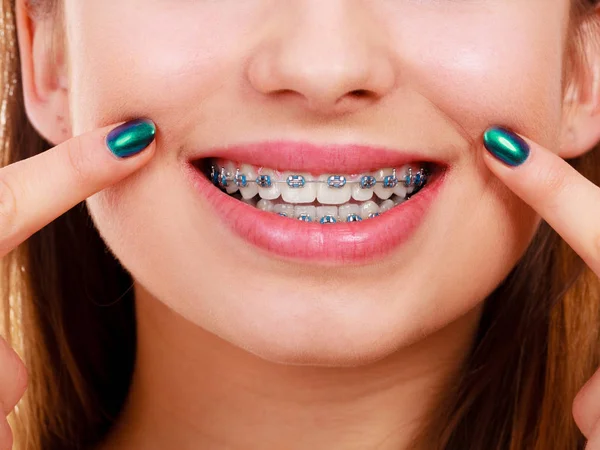Braces Are Straightening Smiles and Boosting Overall Health
- Written by Viw Magazine
Braces are orthodontic appliances that are used to correct misaligned teeth and jaws. They work by applying gentle pressure to the teeth over time, gradually moving them into the desired position. Braces can be made of different materials, such as metal, ceramic, or plastic, and can be customized to fit the individual's unique needs and preferences. While braces are commonly associated with adolescents, adults can also benefit from orthodontic treatment and may use braces to improve their oral health, appearance, and overall well-being. The type of braces recommended will depend on the individual's orthodontic needs, preferences, and goals. Proper orthodontic care, including regular check-ups and adjustments, can ensure the best possible outcomes from braces Ipswich treatment.
Benefits and Advantages of Braces
Braces offer a wide range of benefits and advantages, including:
- Improved oral health: Braces can correct misaligned teeth and jaws, making it easier to clean teeth and reducing the risk of tooth decay, gum disease, and other oral health issues.
- Enhanced appearance: Braces can improve the appearance of the smile, boosting self-confidence and self-esteem.
- Better jaw function: Misaligned jaws can cause problems with biting, chewing, and speaking. Braces can help correct these issues, improving jaw function and reducing discomfort.
- Reduced risk of injury: Misaligned teeth and jaws can increase the risk of injury during sports or other physical activities. Braces can help reduce this risk by aligning teeth and jaws.
- Improved digestion: Misaligned teeth and jaws can make it difficult to chew food properly, leading to digestive issues. Braces can help improve digestion by correcting these issues.
- Better overall health: Poor oral health has been linked to a range of health problems, including heart disease, stroke, and diabetes. By improving oral health, braces can also help improve overall health.
- Customized treatment: Braces can be customized to fit the individual's unique needs and preferences, ensuring the best possible outcomes from treatment.
- Long-term results: With proper care, the results of braces treatment can last a lifetime, providing a healthy, aligned smile that can improve the overall quality of life.
Overall, the benefits and advantages of braces make them an effective and worthwhile investment in oral and overall health.
Types of Braces
There are several types of braces available to suit the individual needs and preferences of patients. Here are some of the most common types of braces:
- Metal braces: Metal braces are the most traditional type of braces, consisting of metal brackets and wires that are affixed to the teeth. They are typically the most affordable option and are known for their durability and effectiveness.
- Ceramic braces: Ceramic braces are similar to metal braces, but the brackets are made of clear or tooth-coloured materials, making them less noticeable. They are a good option for patients who want a more discreet look.
- Lingual braces: Lingual braces are similar to traditional metal braces, but the brackets and wires are attached to the back of the teeth, making them virtually invisible from the front. They are a good option for patients who want a discreet look but do not want to use clear aligners.
- Self-ligating braces: Self-ligating braces use a specialized clip instead of elastic bands to hold the wire in place, reducing the amount of pressure on the teeth and making adjustments more comfortable.
- Clear aligners: Clear aligners are a popular alternative to traditional braces, consisting of a series of clear plastic trays that gradually shift the teeth into the desired position. They are removable, comfortable, and virtually invisible, making them a good option for patients who want a more discreet look.
- Palatal expanders: Palatal expanders are appliances that are used to widen the upper jaw, creating more space for crowded teeth and improving breathing and swallowing.
- Headgear: Headgear is an appliance that is attached to the braces and worn outside of the mouth to correct jaw growth and improve the bite.

The type of braces recommended will depend on the individual's orthodontic needs, preferences, and goals. It's best to consult with a qualified orthodontist who can provide a thorough evaluation and recommend the most suitable treatment plan for your specific needs.
Conclusion
In conclusion, braces offer numerous benefits and advantages for those seeking to improve their oral health, appearance, jaw function, injury risk, digestion, and overall well-being. With a range of customization options and a focus on long-term results, braces can be an effective and worthwhile investment in one's health and quality of life. Proper orthodontic care, including regular check-ups and adjustments, can ensure the best possible outcomes from braces treatment. If you are considering braces, it's best to consult with a qualified orthodontist who can provide a thorough evaluation and recommend the most suitable treatment plan for your specific needs. With proper orthodontic care, you can achieve a healthier, more aligned smile that can have a positive impact on your oral health and overall well-being.





